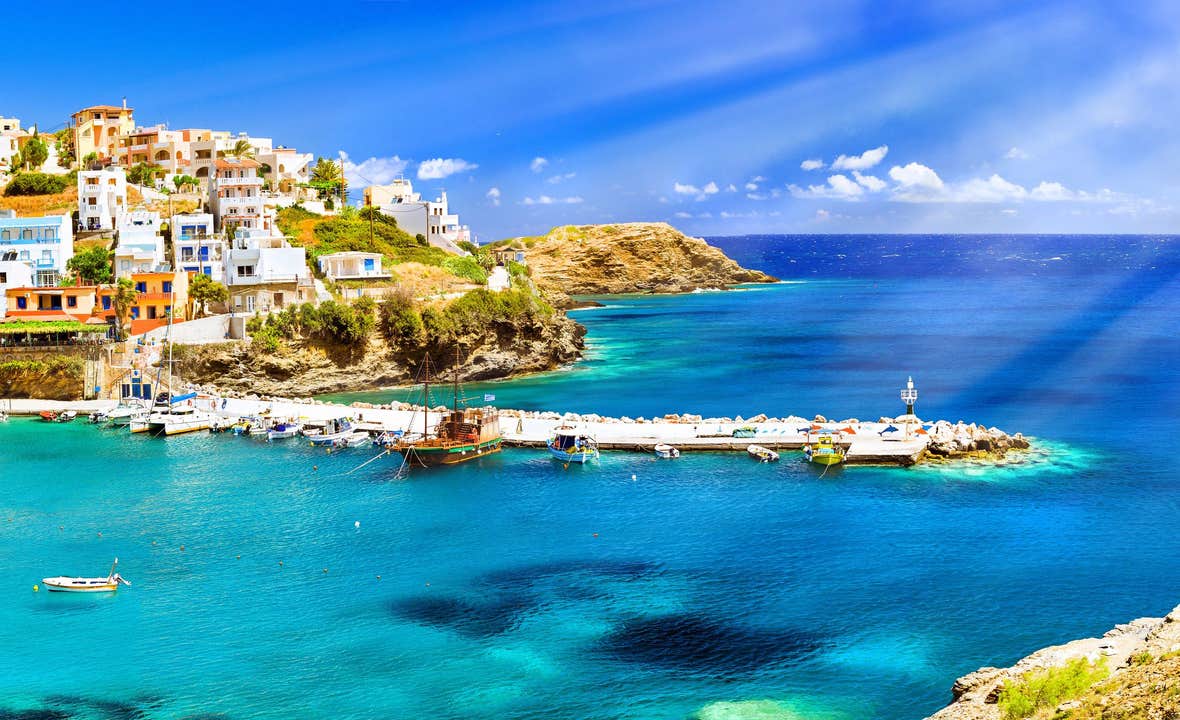




Discover why Greece in May is the perfect getaway, offering pleasant weather, fewer crowds, and stunning landscapes. From exploring the Acropolis to relaxing on Santorini's beaches and embracing local culture, Greece offers something for everyone. Read more and learn everything Greece has to offer in May.
Greece is a captivating destination that blends its rich historical legacy with breathtaking natural beauty. Aside from exploring ancient ruins and stunning islands, May is the perfect time for beach holidays in Greece. Whether you're a history buff, beach lover, or cultural explorer, Greece in May offers a unique experience for all.
Ready to experience Greece in May? Book your flights to Greece and discover the best accommodations in Greece for a memorable stay. Explore exciting vacation packages in Greece that combine history, culture, and stunning beaches, all at your fingertips. Your Greek adventure awaits!
Weather in Greece in May
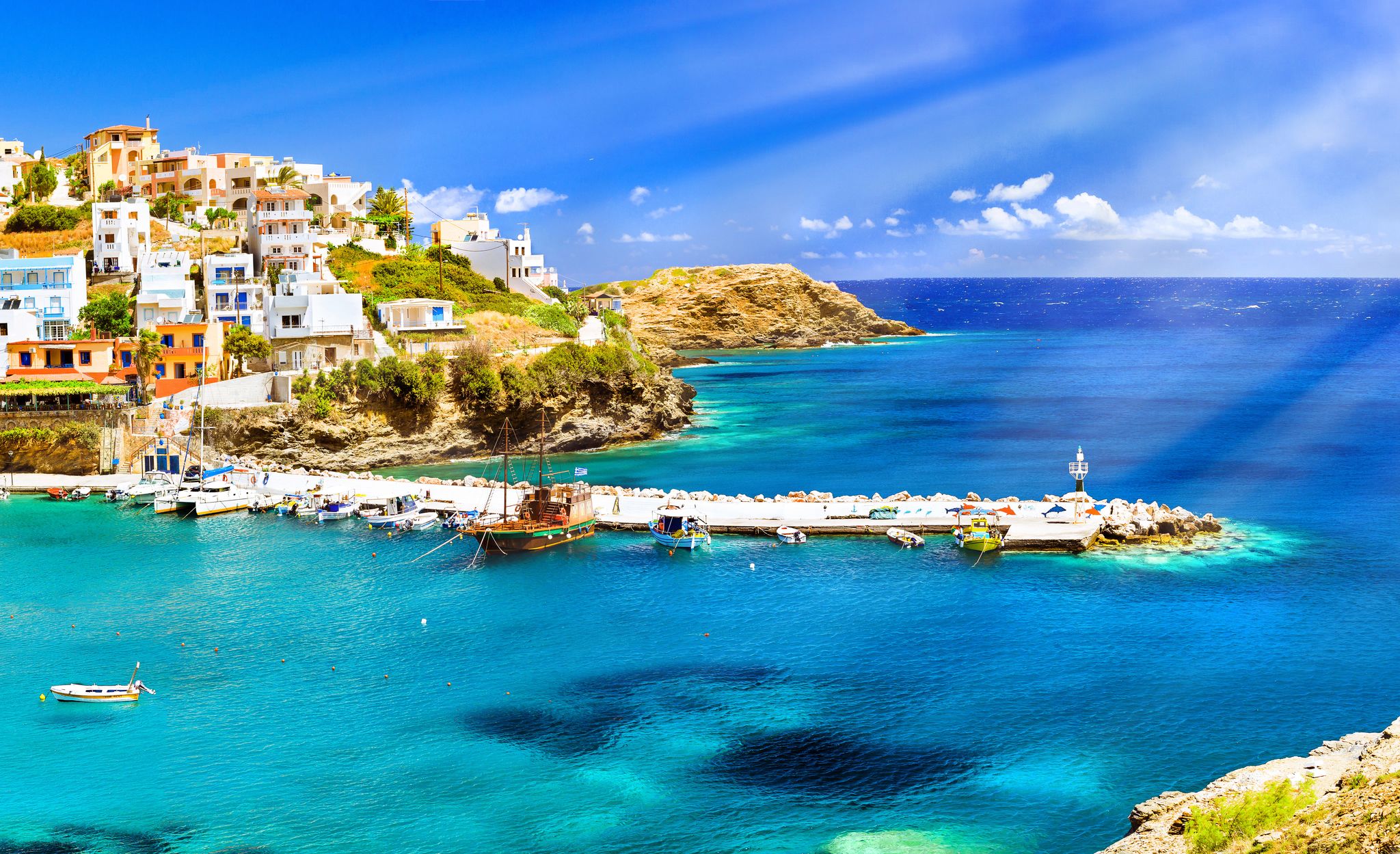
Greece in May is typically warm and sunny, with temperatures ranging from 65 F to 75 F (18 C to 26 C). This makes it an ideal time to explore the beautiful beaches, ancient ruins, and charming villages that Greece has to offer. However, it's a good idea to pack layers as evenings can be cooler.
While the weather is generally warm and sunny, it is essential to note that there can be some variability depending on the region. The islands, such as Crete and Santorini, tend to have warmer temperatures and less rain than the mainland. However, even in the mainland cities of Athens and Thessaloniki, the weather is usually pleasant and perfect for sightseeing.
Visiting Greece in May enables travelers to bask in the sunshine and warmth without the crowds of the peak summer months. Be it unwinding on the shore, discovering historic sites, or savoring delightful Greek dishes, visiting Greece in May promises an unforgettable and pleasant time. For a more accurate weather forecast, check Greece’s official meteorological service website.
Greek Orthodox Easter

Greece in May sees the celebration of the Greek Orthodox Easter, also known as Pascha. It’s Greece's most important religious holiday. It is celebrated with great enthusiasm and is deeply rooted in Greek tradition and culture. Greek Orthodox Easter follows the Julian calendar, so it often falls on a different date than Western Easter.
The celebrations for Greek Orthodox Easter begin with a period of fasting and spiritual preparation known as Lent. This is a time of reflection, prayer, and abstinence from certain foods leading up to the Holy Week, which starts with Palm Sunday and culminates in Easter Sunday.
On Holy Thursday, Greeks dye eggs red to symbolize Christ's blood. Good Friday is a solemn day of mourning with services and processions. Holy Saturday's Anastasi service celebrates Christ's resurrection with candlelight gatherings outside churches.
Easter Sunday is a day of feasting and celebration. Traditional foods such as lamb, kokoretsi (a dish made from lamb or goat offal), and tsoureki (a sweet bread) are enjoyed with family and friends. In many places, there are also lively outdoor celebrations with music, dancing, and fireworks.
The traditions and customs associated with Greek Orthodox Easter vary from region to region, but the overarching theme is one of spiritual renewal, community, and joy. It is a time when families come together to celebrate their faith and heritage, making May an exceptional and meaningful holiday in Greece. Experience Greek Orthodox Easter when you visit in May by booking a religious tour in Greece.
Best Places To Visit in Greece in May
Although most Greek islands do not fully open up for the season until late May or early June, visiting Greece in May presents a golden opportunity due to fewer crowds. Here are some of the best places to visit in Greece in May:
Athens in May
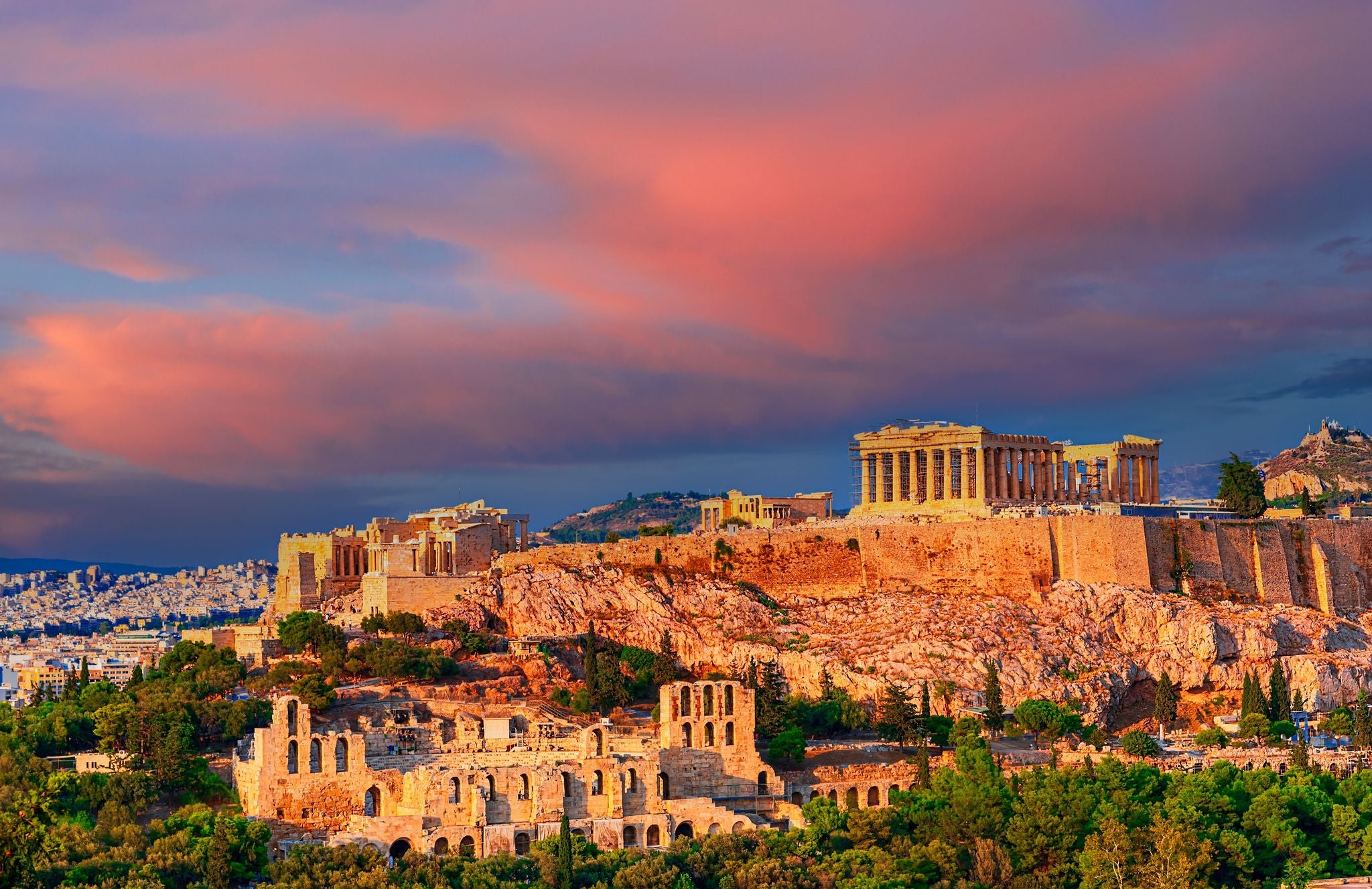
Athens, situated in the region of Attica, is the capital city of Greece and a top destination for history enthusiasts. Known as the heart of Ancient Greece, Athens was once a powerful civilization and empire, leaving behind a wealth of historical landmarks.
The cityscape is still adorned with iconic 5th-century BC structures, allowing visitors to witness this ancient metropolis's rich history and culture. Travelers visiting Athens in May will see numerous top attractions that showcase its rich history and culture, such as the following:
- Acropolis: The Acropolis is a UNESCO World Heritage Site and one of the most famous landmarks in the world. It is home to several ancient buildings of great architectural and historic significance, the most famous being the Parthenon, a temple dedicated to the goddess Athena.
- Parthenon: The Parthenon is an iconic symbol of Ancient Greece in the Acropolis. This ancient temple is a testament to the grandeur of Athenian architecture and is dedicated to the goddess Athena, the city's patron deity.
- Plaka: Known as the "Neighborhood of the Gods," Plaka is a historic neighborhood at the foot of the Acropolis. It is famous for its charming narrow streets, neoclassical architecture, traditional tavernas, and souvenir shops.
- National Archaeological Museum: The National Archaeological Museum is one of the most important in the world and houses a vast collection of artifacts from Ancient Greece, including sculptures, jewelry, pottery, and art pieces.
- Ancient Agora: The Ancient Agora of Athens was the heart of ancient Athens and served as a marketplace and civic center. Today, visitors can explore the ruins of ancient buildings and temples, including the Temple of Hephaestus.
- Temple of Olympian Zeus: This colossal temple was dedicated to Zeus, the king of the Olympian gods. Although only a few of its original columns remain standing, the Temple of Olympian Zeus provides a glimpse into the architectural grandeur of Ancient Greece.
- Syntagma Square and the Greek Parliament: Syntagma Square is the central square of Athens and is home to the Greek Parliament building. Visitors can observe the changing of the guard ceremony at the Tomb of the Unknown Soldier, a traditional and impressive display of military precision.
Santorini in May

Santorini is famous for its iconic white-washed buildings, breathtaking sunsets, crystal-clear waters, and blue-domed churches. Visiting Santorini in May is the perfect time to go on a 10-day Santorini beach holiday in Kamari. Some of the top destinations to visit in Santorini include the following:
- Oia: Oia is a charming village famous for its stunning sunsets and picturesque blue-domed churches. Visitors can wander through the narrow cobblestone streets, browse art galleries, and enjoy panoramic views of the caldera.
- Fira: The city of Fira is the bustling capital of Santorini, perched on the edge of the caldera. It offers a lively atmosphere with various restaurants, shops, and nightlife. Visitors can also explore the Museum of Prehistoric Thira to learn about the island's ancient history.
- Akrotiri: Akrotiri is an archaeological site that offers a glimpse into the island's ancient past. Visitors can explore the well-preserved ruins of a Minoan Bronze Age settlement, often called the "Minoan Pompeii."
- Red Beach: This unique beach is known for its striking red cliffs and dark sand, creating a dramatic and picturesque setting. It's an excellent spot for sunbathing and swimming in the clear waters of the Aegean Sea.
- Pyrgos: Pyrgos is a traditional village with a medieval character, featuring narrow alleys, traditional houses, and panoramic island views. Visitors can climb to the top of the town to explore the ruins of a Venetian castle.
Mykonos in May

Mykonos is a stunning and bustling Greek island known for its picturesque beaches, charming white-washed buildings with blue domes, and buzzing nightlife. The island's cosmopolitan atmosphere, lively beach clubs, and beautiful sunsets make it a popular destination for travelers seeking a mix of relaxation and excitement.
Here are some of the top destinations and attractions to explore while visiting Mykonos in May:
- Mykonos Town (Chora): The picturesque Mykonos Town, also known as Chora, is a must-visit destination. Stroll through the narrow winding streets lined with whitewashed buildings adorned with colorful doors and window shutters. Explore the iconic windmills, Little Venice’s waterfront cafes, and the lively Matoyianni Street for shopping and dining.
- Paradise Beach: As one of the most famous beaches on the island, Paradise Beach is known for its golden sand, crystal-clear waters, and vibrant beach clubs. It's the perfect place to soak up the sun, enjoy water sports, and experience the lively beach party atmosphere.
- Delos Island: Take a short boat trip from Mykonos to the nearby island of Delos, an archaeological site designated as a UNESCO World Heritage Site. Delos is considered one of Greece's most important mythological, historical, and archaeological sites, with ruins dating back to ancient times.
- Little Venice: This charming neighborhood in Mykonos Town is characterized by its picturesque houses built right at the water's edge. Enjoy stunning sunset views, explore the narrow streets, and dine at one of the waterfront restaurants while enjoying the beautiful sea views.
- Windmills of Mykonos: The iconic windmills are a signature feature of Mykonos' landscape and a symbol of the island. Located on a hill overlooking Mykonos Town, the windmills offer a great vantage point for panoramic views of the town and the sea.
- Panagia Paraportiani: Panagia Paraportiana is a must-see architectural marvel, consisting of five small churches merged into one impressive structure. Its whitewashed walls and intricate design make it a popular spot for photography and sightseeing.
Crete in May
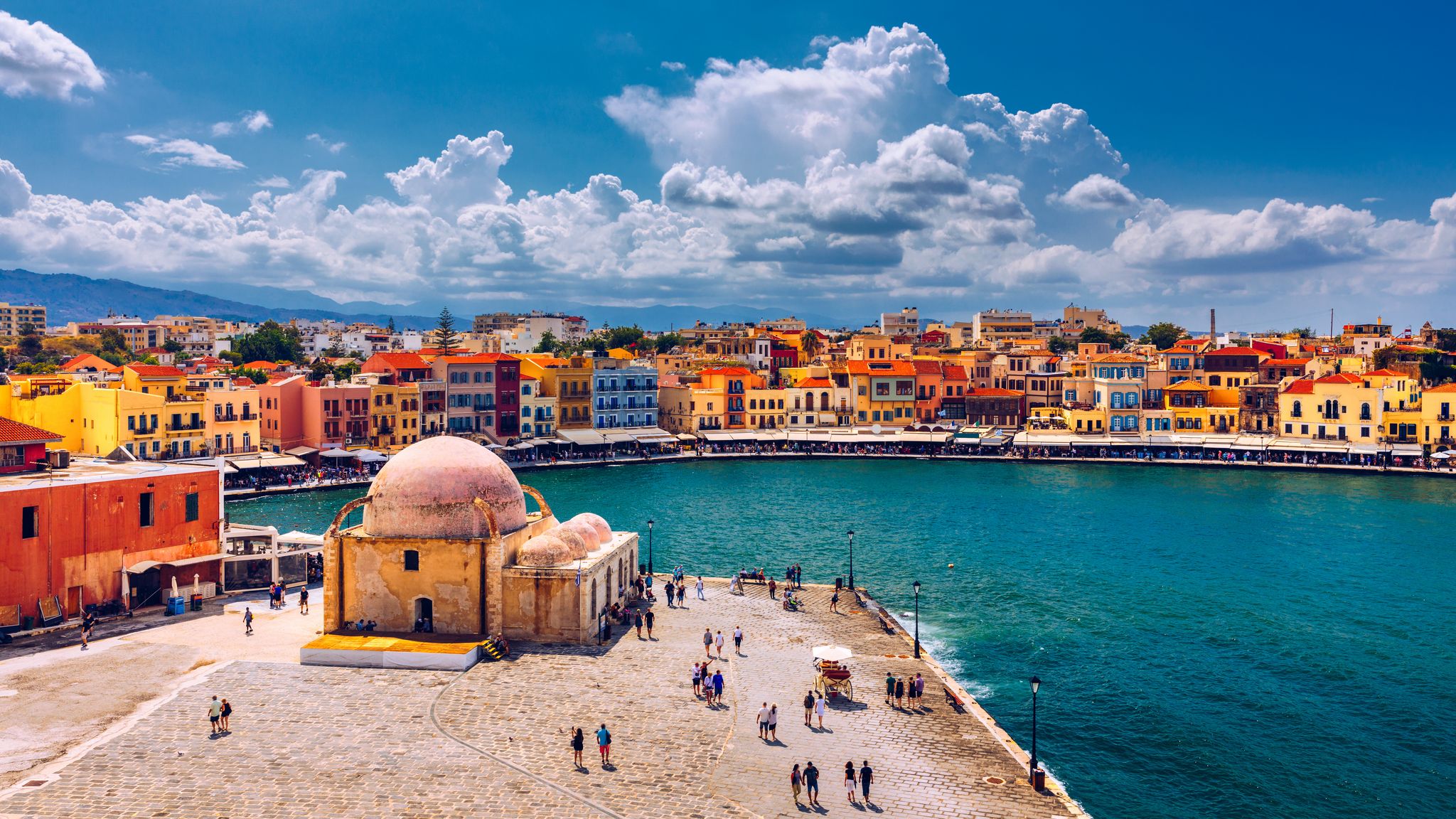
As the largest island in Greece, Crete is known for its diverse landscapes, ancient ruins, and beautiful beaches. In May, the weather is warm enough to enjoy swimming in the crystal-clear waters and exploring the stunning gorges and mountains of the island. Visit the charming villages, sample the delicious local cuisine, and engage in the rich history of Crete.
Here are some top destinations in Crete in May that offer a diverse array of experiences:
- Heraklion: Heraklion is the largest city and the capital of Crete, known for its mix of ancient and modern attractions. Highlights include the Heraklion Archaeological Museum, Koules Fortress, and the Morosini Fountain.
- Chania: Chania is a picturesque harbor town known for its charming Venetian architecture, narrow cobblestone streets, and waterfront restaurants. The old town of Chania is a delightful maze of colorful buildings, artisan shops, and historical landmarks, including the well-preserved Venetian Harbor and the iconic lighthouse.
- Rethymnon: This coastal town features a well-preserved old town with a unique blend of Venetian and Ottoman influences. Visitors can explore the narrow alleys, visit the Fortezza fortress, and enjoy the enchanting Venetian harbor. Rethymnon also offers beautiful beaches and a lively dining scene.
- Samaria Gorge: Nature enthusiasts and hikers shouldn't miss the chance to trek through the stunning Samaria Gorge, one of Europe's longest and most breathtaking gorges. The trail leads through dramatic landscapes and ends at the coastal village of Agia Roumeli.
- Knossos: For history buffs, visiting the ancient Minoan palace of Knossos is a must. This archaeological site near Heraklion is filled with mythology and history, offering a glimpse into the advanced civilization that once thrived on the island.
Thessaloniki in May
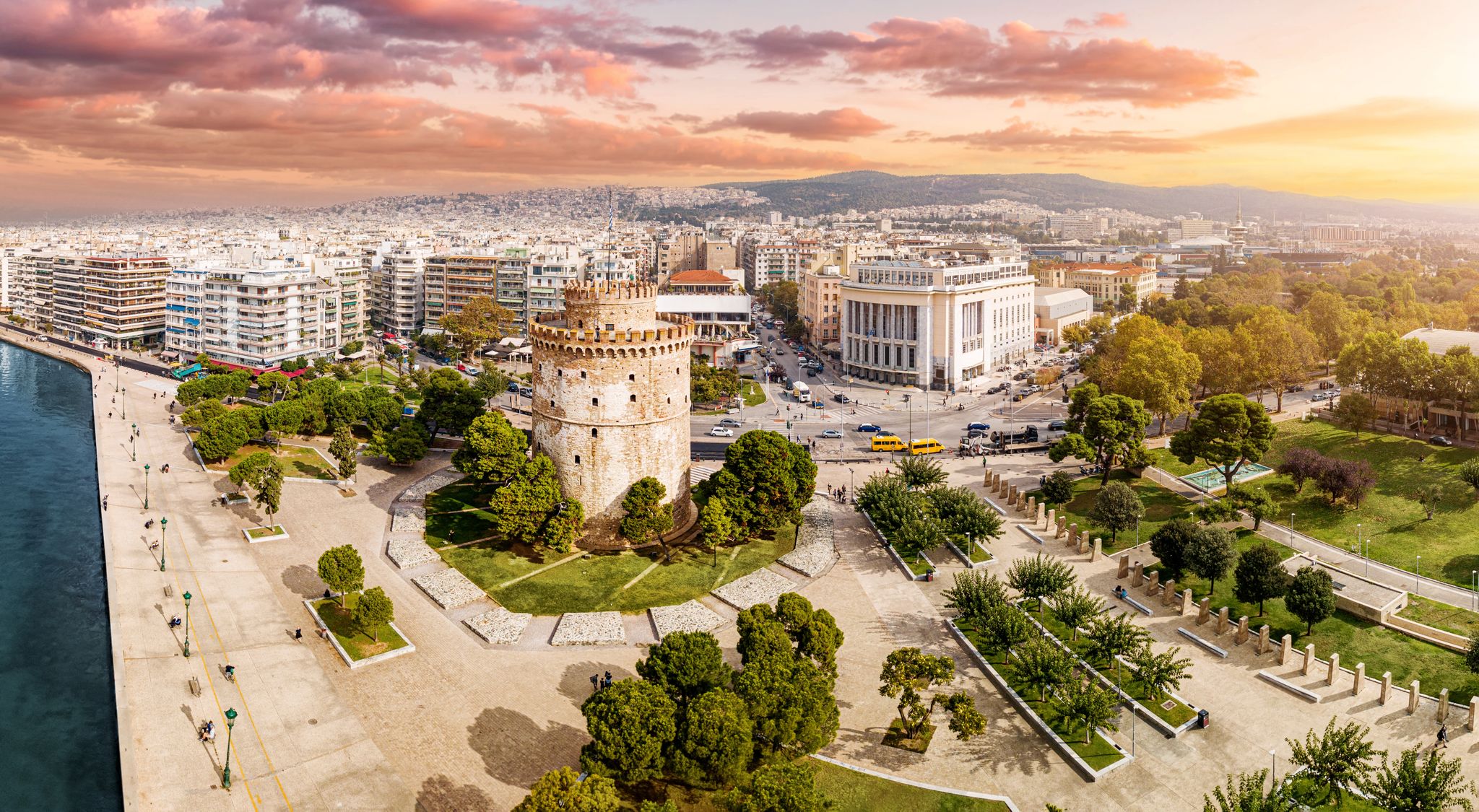
Thessaloniki is Greece’s second-largest city and the country’s capital of culture. With its Byzantine churches, Ottoman architecture, and bustling markets, the city is renowned for its history, festivals, events, and vibrant cultural life. Due to the pleasant weather in May, it’s the perfect opportunity to engage in Thessaloniki's rich culture and history.
Here are some of the top destinations in Thessaloniki in May:
- White Tower of Thessaloniki: The White Tower of Thessaloniki is an iconic landmark that offers stunning views of the city and the sea. It also houses a museum that showcases the history of Thessaloniki.
- Aristotelous Square: Aristotelous Square is a bustling square at the heart of the city, surrounded by beautiful neoclassical buildings, cafes, and shops.
- Ano Poli: This historic district features charming cobblestone streets, traditional tavernas, and panoramic city views.
- Arch of Galerius and Rotunda: The Arch of Galerius and the Rotunda are ancient Roman monuments designated as UNESCO World Heritage Sites and are must-see attractions for history enthusiasts.
- Ladadika: This lively neighborhood is known for its exciting nightlife, excellent restaurants, and bars housed in renovated historic buildings.
- Archaeological Museum of Thessaloniki: The Archaeological Museum of Thessaloniki boasts an impressive collection of artifacts dating back to ancient times, including exhibits from the Greek and Roman periods.
Rhodes in May
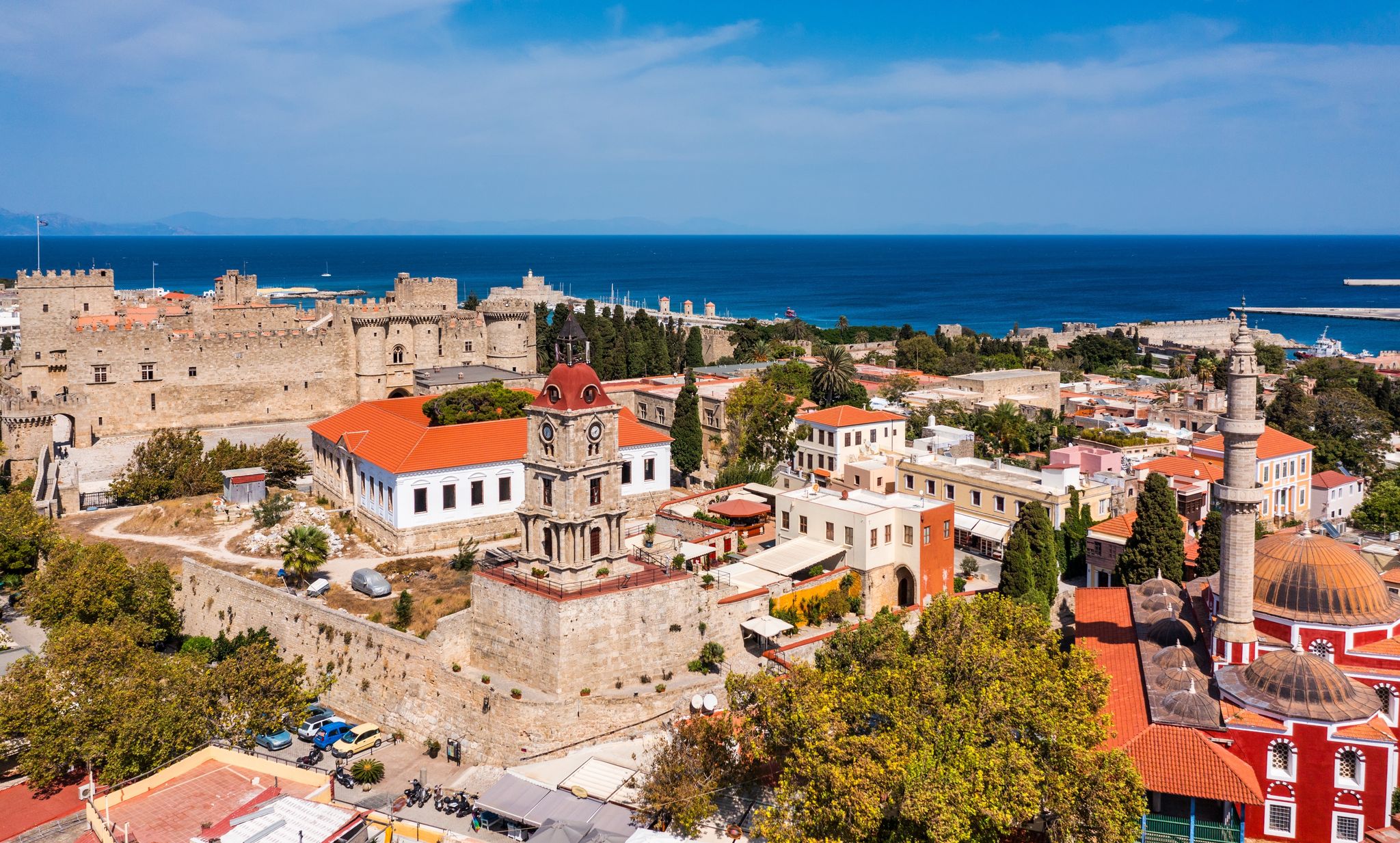
The largest of the Dodecanese islands in Greece, Rhodes is a captivating destination known for its rich history, stunning beaches, and charming old town. Rhodes offers a mix of ancient ruins, medieval architecture, and vibrant culture, making it a must-visit destination. Explore the medieval city, relax on beautiful beaches, and enjoy delicious Greek cuisine.
Here are some of the top destinations in Rhodes in May:
- Old Town of Rhodes: The medieval old town of Rhodes is a UNESCO World Heritage Site and a treasure trove of historical and architectural wonders. The Old Town offers a glimpse into the island's rich past with its cobblestone streets, ancient walls, and well-preserved buildings.
- Palace of the Grand Master of the Knights of Rhodes: The Palace of the Grand Master of the Knights of Rhodes is an imposing castle in the Old Town. It is a testament to the island's medieval history. Visitors can explore the palace's grand halls, courtyards, and stunning mosaics.
- Lindos: This picturesque village is famous for its whitewashed buildings, narrow alleys, and the ancient Acropolis perched on a hill overlooking the sea. The Acropolis of Lindos is a must-visit, offering breathtaking views and a fascinating glimpse into ancient Greek architecture.
- Prasonisi: Nature lovers and outdoor enthusiasts will appreciate Prasonisi, a unique beach where the Aegean and Mediterranean seas meet. It's a popular spot for windsurfing and kitesurfing due to the strong winds and ideal conditions.
- Valley of the Butterflies: This lush valley is home to a unique species of butterflies that gather in large numbers during summer. The peaceful walking paths and beautiful natural surroundings make it a serene and picturesque destination.
What To Do in Greece in May
With pleasant weather conditions, fewer crowds, and 12 to 14 hours of daylight, Greece in May presents the perfect opportunity to explore the country. Here are some of the things to do in Greece in May:
Explore Ancient Ruins
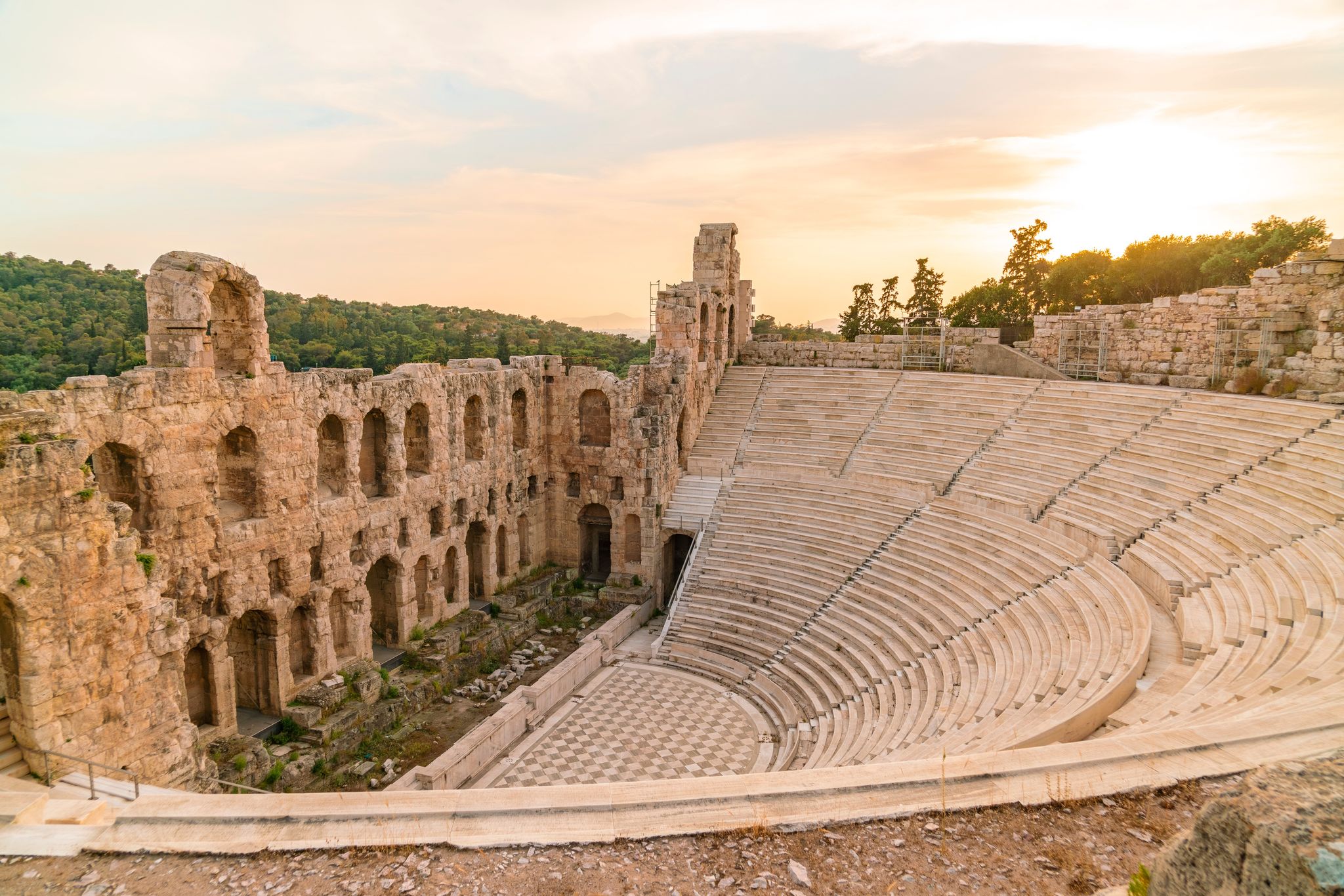
Greece boasts a rich history and culture, and several sites are scattered throughout the country, offering visitors a unique opportunity to soak in that history and culture. Here are some of the most well-preserved sites to visit in Greece in May:
- Acropolis - Exploring the Acropolis in Athens is an unforgettable experience. A landmark tour in Athens reveals iconic structures like the Parthenon and the Temple of Athena Nike, offering stunning views and a deep connection to Greece's ancient history.
- Delphi - Journey through time and engross yourself in rich cultural heritage by going on a Delphi full-day tour from Athens, an ancient archaeological site in Phocis. Delphi is considered one of the most important cities in Ancient Greece, known for the Pan-Hellenic sanctuary of Apollo and the Oracle of Delphi. This UNESCO World Heritage Site features well-preserved ruins from ancient times.
- Palace of Knossos - Uncover history at the Palace of Knossos, a Bronze Age archaeological site in Crete, central to Minoan civilization. With a Knossos Palace skip-the-line ticket, you can explore this iconic site, famously linked to the myth of Theseus and the Minotaur.
Whether you're interested in ancient Greek mythology, the history of the Olympic Games, or the many wars and battles that took place in this region, there is something for everyone to discover when you visit these historical sites during your trip to Greece in May.
Relax on the Beach

Greece in May offers various beach experiences and comfortable weather with fewer crowds. The last week of May is ideal for swimming and exploring beautiful beaches, especially in the southern part of the country. Crete, the Cyclades, and the Dodecanese are perfect for hot-weather seekers, while Skiathos and Rhodes are great for water activities. Here are some of the must-visit beaches in Greece:
- Navagio Beach (Shipwreck Beach), Zakynthos: Accessible only by boat, Navagio is famous for its shipwreck surrounded by turquoise waters and steep cliffs.
- Balos Lagoon, Crete: A mesmerizing lagoon with shallow, clear waters and pinkish sand between the Gramvousa peninsula and the Tigani cape.
- Myrtos Beach, Kefalonia: Known for its dramatic cliffs, white pebbles, and deep blue waters, often featured in lists of the world's most beautiful beaches.
- Elafonissi Beach, Crete: Famous for its pink sand and shallow, crystal-clear waters. The beach is located on a small island connected to the mainland by a shallow reef.
- Sarakiniko Beach, Milos: This unique beach is known for its lunar landscape of white volcanic rock formations against azure waters.
- Lalaria Beach, Skiathos: Accessible only by boat, this beach is famous for its white pebbles and turquoise waters, framed by steep cliffs and a natural stone arch.
- Red Beach, Santorini: Known for its unique red volcanic sand and steep red cliffs, creating a striking contrast with the deep blue sea.
- Voidokilia Beach, Peloponnese: A pristine, semicircular beach with soft white sand and shallow turquoise waters, backed by sand dunes and a nature reserve.
- Kolymbithres Beach, Paros: Famous for its unique rock formations sculpted by the sea, creating natural swimming pools and secluded coves.
- Psarou Beach, Mykonos: A cosmopolitan beach known for its golden sand, clear waters, and upscale beach clubs.
These beaches showcase the diversity and natural beauty of Greece's coastline, offering something for every type of beach lover, whether you seek secluded coves, dramatic landscapes, or energetic atmospheres.
Attend a Festival
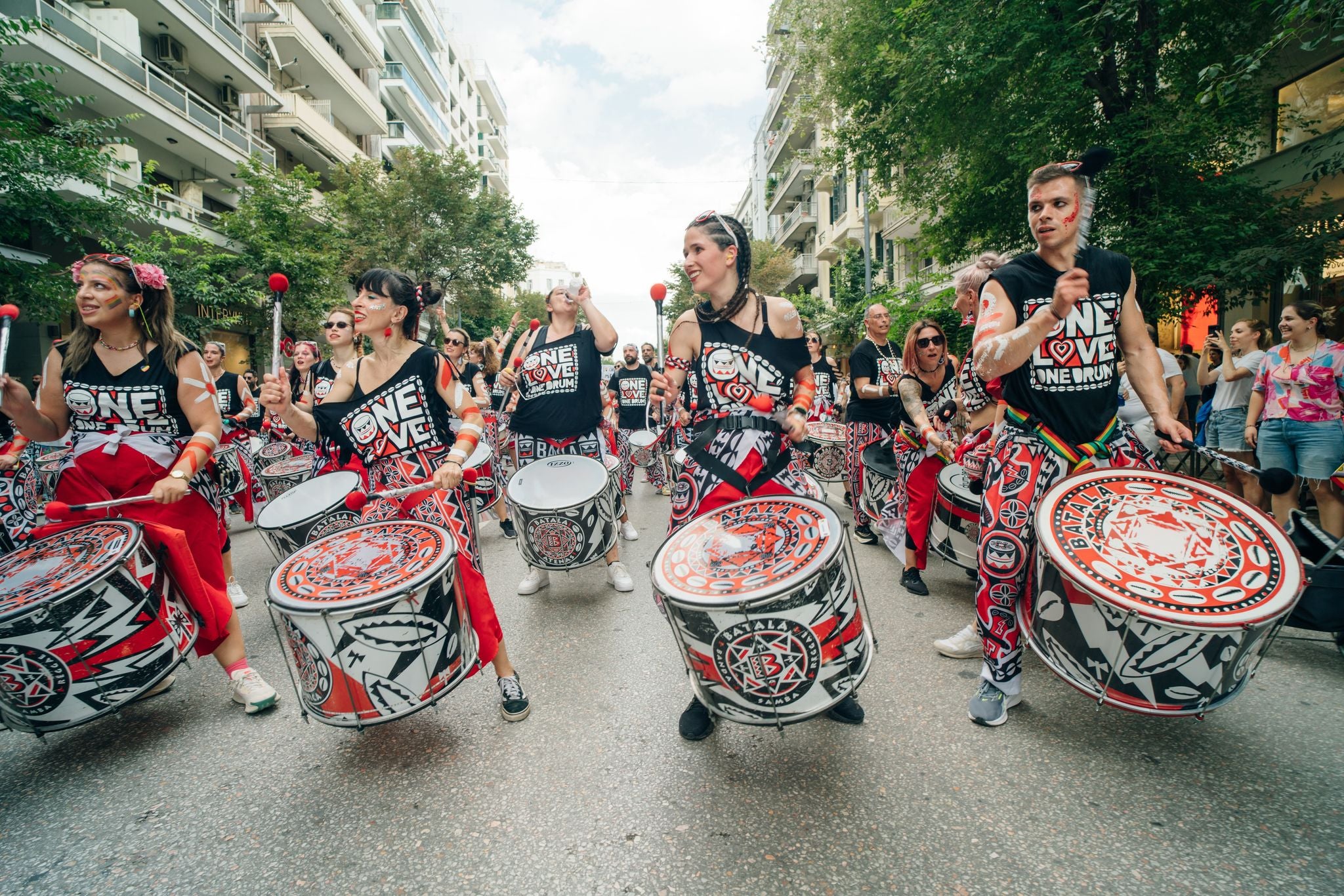
Greece in May comes alive with lively festivals that celebrate the country's rich cultural heritage. From the enchanting rhythms of traditional Greek music and dance to the tantalizing flavors of Mediterranean cuisine, these festivals offer something for everyone. Among the most popular festivals are:
- Anastenaria (Firewalking Festival) - This festival is a must-attend when visiting Thessaloniki in May. Linked to the feast day of Saints Constantine and Helen, the ancient firewalking rituals are performed by descendants of Eastern Orthodox Christians around May 21-23. Consider a 5-Day Greece City Break in Thessaloniki to experience this unique cultural event.
- Protomagia (May Day) - May Day, or Protomagia, celebrates spring and renewal, rooted in Ancient Greece. On May 1, people gather wildflowers, make wreaths, and hang them on doors. It symbolizes the victory of summer over winter and life over death.
- Athens Technopolis Jazz Festival - Held at the end of May, Athens' jazz festival is one of the city's longest-running music events. It features global jazz bands and artists, making it one of Europe's most anticipated festivals.
- Hellenic Festival (Athens & Epidaurus Festival) - Starting in May and running through the summer, this festival offers a wide range of performances, including theater, dance, and music. It takes place in various venues around Athens and the ancient theater of Epidaurus, providing a unique backdrop that enhances the experience.
- Rethymnon Renaissance Festival - Starting in late May or early June, this festival on the island of Crete celebrates the historical period of the Renaissance with a series of performances that include music, theater, and dance, all taking place in the picturesque Venetian fortress and other locations around the city.
Hike in the Mountains

Greece offers stunning hiking opportunities, especially in May, with mild temperatures and vibrant wildflowers. Hiking tours in Greece provide a unique experience, perfect for nature lovers seeking breathtaking views and unforgettable memories. Here are some trails and mountains good for hiking in Greece:
- Mount Olympus: Known as the mythical home of the Greek gods, Mount Olympus offers challenging hikes with stunning views. The most popular trail is the hike to Mytikas, the highest peak in Greece. Don’t miss out on this experience by booking this Mount Olympus hiking experience in Greece.
- Samaria Gorge, Crete: Located in the White Mountains (Lefka Ori), Samaria Gorge is one of Europe's longest gorges. The hike through the gorge is about 16 km long and ends at the village of Agia Roumeli on the Libyan Sea coast. Explore this trail by booking a hiking tour to the Samaria Gorge from Chania.
- Vikos Gorge, Zagori, Epirus: This gorge is one of the deepest in the world, known for its dramatic cliffs and pristine natural beauty. Hiking trails offer breathtaking views of the Vikos River and surrounding landscapes.
- Mount Parnassus: Close to Delphi, Mount Parnassus offers various trails suitable for different hiking levels. The hike to the peak of Liakoura provides panoramic views of the surrounding mountains and the Gulf of Corinth.
- Mount Taygetus: Located in the Peloponnese, Mount Taygetus offers challenging hikes with rewarding views of the Mani Peninsula and the Laconian Gulf. The climb to Mount Profitis Ilias is particularly popular.
- Mount Athos: Known as the Holy Mountain, Mount Athos offers limited access to male visitors due to its status as an Orthodox spiritual center. Hiking trails here provide views of monasteries and the rugged coastline.
- Mount Pelion: Known for its lush vegetation and traditional villages, Mount Pelion offers a network of hiking trails that wind through forests, springs, and charming mountain villages.
- Mount Dirfi, Evia: The highest mountain on the island of Evia, Mount Dirfi offers several hiking trails through diverse landscapes, including forests, alpine meadows, and rocky slopes.
- Mount Parnitha, Attica: Close to Athens, Mount Parnitha offers hiking trails amidst pine forests. The trails lead to viewpoints with panoramic views of Athens and the Saronic Gulf.
- Mount Lefka Ori (White Mountains), Crete: Besides Samaria Gorge, the White Mountains offer numerous other hiking trails through rugged terrain and alpine landscapes, with views over the north and south coasts of Crete.
These trails and mountains in Greece cater to hikers of various skill levels and offer opportunities to explore the country's natural beauty and diverse landscapes.
Try Greek Cuisine

Greece is famous for its delicious cuisine, passed down through generations. Its coastline offers fresh seafood for some of the tastiest dishes, while meat lovers can enjoy traditional souvlaki. No Greek meal is complete without wine and cheese, and the country offers a wide variety of both to savor.
Explore Greece’s culinary wonders by booking this Greek food tour in Athens. When visiting Greece in May, exploring local markets is an excellent way to indulge in the country's culinary delights. Here are some popular markets where you can taste authentic Greek cuisine:
- Athens Central Market (Varvakios Agora): Located in the heart of Athens, this bustling market is a sensory feast with stalls selling fresh seafood, meats, cheeses, olives, herbs, and spices. It's a great place to sample traditional Greek dishes like souvlaki, gyro, and fresh Greek salads.
- Agora Market, Thessaloniki: Thessaloniki's main market is a treasure trove of local produce, meats, and cheeses. You can try regional specialties like bougatsa (a pastry filled with cream or cheese), koulouri (sesame bread rings), and local olives.
- Chania Market, Crete: The Municipal Market of Chania (Agora) is renowned for its lively atmosphere and fresh produce. Here, you can taste Cretan cheeses (like graviera and mizithra), dakos (barley rusk topped with tomatoes and feta), and freshly caught seafood.
- Athinios Market, Santorini: Located near the port of Athinios, this market offers a variety of local products, including Santorini tomatoes, capers, and fava beans. You can also find wines produced from the island's unique volcanic soil.
- Louloudadika Market, Rhodes: In Rhodes Town, the Louloudadika Market (Flower Sellers Market) transforms into a bustling food market during the day. You can sample traditional Rhodian dishes like mezedes (small dishes) and local wines.
- Aegina Pistachio Market: Aegina, known for its pistachios, hosts a pistachio festival in May where you can taste various pistachio products, including pastries, ice cream, and local dishes featuring this unique ingredient.
- Nafplio Farmers' Market: Nafplio's weekly farmers' market offers fresh fruits, vegetables, cheeses, and olive products from the Argolis region. It's a great place to try local olive oils and traditional sweets like amygdalota (almond cookies).
Visiting these markets not only allows you to taste authentic Greek cuisine but also provides insight into the country's culinary traditions and local specialties. Enjoy exploring the flavors of Greece amidst the energetic ambiance of its markets in May.
Tips for Visiting Greece in May

Make the most out of your visit to Greece in May by following these tips:
- Pack light layers: While the weather in Greece in May is generally warm and pleasant, it's a good idea to pack light layers as evenings can be cooler, especially in the mainland cities.
- Plan for Greek Orthodox Easter: If your trip coincides with Greek Orthodox Easter, be prepared for unique cultural experiences and potential changes in operating hours for attractions and businesses.
- Consider visiting the islands: May is considered the shoulder season in Greece, making it an ideal time to visit the islands with fewer crowds and comfortable weather. However, remember that some islands may not fully open up for the season until late May or early June.
- Explore historic sites: Take advantage of the comfortable weather in Greece in May by exploring historic sites, such as the Acropolis in Athens, before the peak summer crowds arrive.
- Embrace the local cuisine: Indulge in delicious Greek cuisine when visiting Greece in May, including traditional dishes enjoyed during Greek Orthodox Easter, and explore local food markets for authentic culinary experiences.
- Stay hydrated: With warmer temperatures in Greece in May, staying hydrated is essential, especially if you plan to spend time outdoors exploring beautiful landscapes and historic sites.
- Check for festivals and events: Research local festivals or events as Greece in May often hosts cultural and music festivals during this time, offering unique experiences for travelers.
- Book accommodations in advance: While Greece in May is not as crowded as the peak summer months, it's still a popular time to visit, so consider booking accommodations in advance, especially if you have specific preferences.
- Respect historical sites: When visiting ancient ruins and historic sites during your trip to Greece in May, remember to respect the rules and guidelines to preserve these critical cultural landmarks for future generations.
Are You Ready to Explore Greece in May?

Visiting Greece in May promises an unforgettable experience with its rich culture, ancient history, and stunning landscapes. Explore the Acropolis in Athens, the ruins of Delphi, or relax on the sun-drenched beaches of the Greek islands. May offers pleasant weather, fewer crowds, and vibrant wildflowers in bloom.
While Greece in May is an ideal destination, the best time to visit Greece can vary based on your preferences. For more details on when to visit depending on your interests, be sure to read the best time to visit Greece blog. It will help you choose the perfect season to experience all that Greece has to offer.
FAQs About Visiting Greece in May
What is the weather like in Greece in May?
Greece in May is typically warm and sunny, with temperatures ranging from 65 F to 75 F (18 C to 26 C). However, weather conditions can vary depending on the region you are visiting. The islands generally have warmer temperatures and less rain than the mainland. Overall, May offers pleasant weather ideal for exploring archaeological sites, relaxing on beaches, or enjoying outdoor activities.
What should I pack for a trip to Greece in May?
When visiting Greece in May, packing light, breathable clothing for the warm weather and some layers for cooler evenings is a good idea. Essentials include sunscreen, a hat, and comfortable walking shoes for exploring. Additionally, bring a light jacket or sweater, swimwear for the beaches, and a reusable water bottle to stay hydrated. Don’t forget sunglasses and a small daypack for carrying your essentials during day trips.
Is May a good time to visit Greece?
Yes, May is an ideal time to plan a trip to Greece. It falls during the shoulder season, offering visitors pleasant weather and fewer crowds than the peak summer months. During this month, you’ll find that many flowers, such as daisies, jasmine, and bougainvillea, are in bloom. It’s a great time to enjoy outdoor activities and explore historical sites without the intense heat of summer.
What are the top destinations to visit in Greece in May?
Greece in May offers an array of exceptional destinations. Athens, the historical capital, boasts iconic landmarks such as the Acropolis and the Parthenon. The island of Crete beckons with its picturesque beaches and ancient Minoan sites. Meanwhile, the lively islands of Mykonos and Santorini present visitors with stunning sunsets, white-washed buildings, and a vibrant nightlife scene.
Are there any special events or holidays in Greece in May?
Greece in May hosts several notable events and holidays that showcase its cultural vibrancy and traditions. One significant celebration is Labor Day on May 1st, marked by public demonstrations and festivities honoring workers. Other notable events and festivals include the Anastenaria in Thessaloniki, a traditional firewalking festival, and the Athens Technopolis Jazz Festival, which features performances by international and Greek jazz artists. Additionally, the Athens & Epidaurus Festival, one of Greece's most prominent cultural events, begins in late May and offers a rich program of theater, music, and dance performances.
Is it expensive to visit Greece in May?
Visiting Greece in May offers a favorable balance of good weather and reasonable costs. Accommodations and flights are generally more affordable than in the peak summer months. Dining and local transportation are also reasonably priced, especially if you explore local options. With fewer crowds and pleasant weather, May is a great time to enjoy Greece without breaking the bank. Alternatively, affordable travel packages to Greece in May are available for those seeking a cheaper option.
What is the best way to get around Greece in May?
Greece offers a variety of transportation options suitable for different travel preferences. Major cities like Athens and Thessaloniki have reliable public transportation systems, including buses and metros, operating regularly throughout the month. Renting a car is ideal for exploring Greece's countryside and accessing remote areas or historical sites, with May offering pleasant weather and good road conditions. Ferries connect mainland ports with popular islands like Santorini and Mykonos, and it’s advisable to book tickets for ferry services in advance due to increased schedules as the tourist season begins. Domestic flights are also available, providing quick connections between major cities and islands. Overall, Greece in May ensures convenient and varied transportation options to enhance your travel experience.
